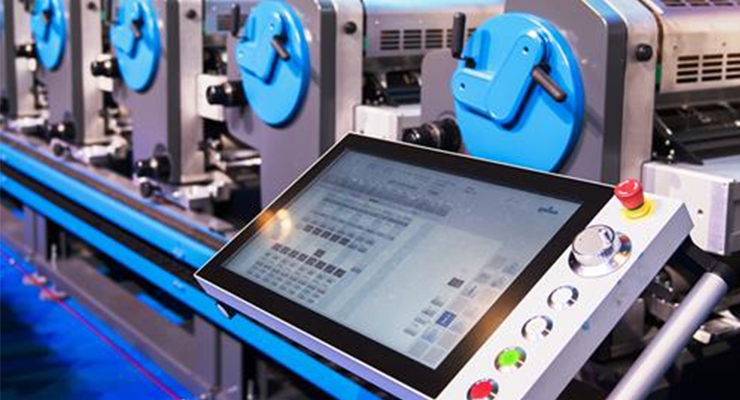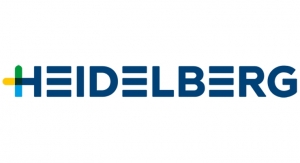his article is part of a new series about the basics of label printing, in cooperation with Label Academy.

This article is part of a new series about the basics of label printing, in cooperation with Label Academy.
The origins of the flexographic printing process derived from the use of rubber stamps which were manufactured using plaster moulds impressed with lead type to create the image area. It was the Mosstype Corporation who first developed the use of rubber plate-making to be used in both the flexo and letterpress printing processes. In 1890 the first flexo press was built in Liverpool by the English company Bibby Baron and Sons. Other presses which also used rubber plates and aniline* inks were developed in Europe, with Germany manufacturing the majority of flexo/aniline presses.
Originally, the inks used for flexo were aniline dye inks and the name aniline printing persisted. In the United States the aniline process was used extensively in the food packaging sector, but in the 1940s the use of aniline inks was banned in food packaging. Safer coloring agents were developed, but the aniline processes still carried a bad reputation and as a result the print sales which used this process declined. Franklin Moses in 1951 started a campaign to change the name of the process from aniline to the flexographic process which was subsequently renamed ‘flexography.’
*Aniline – definition *Aniline is a colorless, oily, partially water-soluble organic compound derived from nitrobenzene.
FLEXOGRAPHIC PRINTING IN LABEL MANUFACTURING
Flexographic printing was for many years considered an inferior printing process and serviced the lower end of the label market. Labels requiring higher quality were generally printed using the offset litho or letterpress processes. In the last three decades considerable progress has been made in the manufacture of highly engineered flexo presses and developments in printing plates, anilox rollers and printing inks now makes flexo the leading process for the manufacture of self-adhesive labels. The introduction of UV ink curing has had a big impact on the flexo process. The switch from aqueous and solvent based inks to UV cured ink in particular has improved print quality and made it easier to print filmic and metallic substrates and has reduced the usage of solvents.
TYPES OF FLEXO LABEL PRESSES
There are three configurations of flexo presses used in the label industry: the stack press; the common impression press; the in-line press.
All these presses can be equipped with solvented, water-based and UV drying systems dependent on the press specification. The press configuration most widely used for label manufacture is the in-line press.
THE PRINCIPLE OF THE FLEXOGRAPHIC PROCESS
Flexography is a relief or raised image printing process using the same principle as letterpress. A flexible rubber or photopolymer plate is mounted on to the plate cylinder using a filmic double-sided adhesive tape. The plate image is inked with a liquid ink which is transferred from the anilox roller, direct to the surface of the image area and then printed onto the substrate, using a very light controlled pressure (impression).
The basic flexo printing unit comprises of an ink tray or duct, the ink applicator roller, the anilox roller, the plate cylinder and the impression roller.

Figure 1 – Basic flexo unit (Source: 4impression)
Figure 1 illustrates the layout of a standard flexo unit. The applicator roller runs in the liquid ink held in the ink tray. The ink can be manually poured into the ink tray or alternatively pumped into the tray using a circulatory system to ensure that the ink viscosity is maintained. The applicator roller applies ink to the anilox roller and the pressure between these two rollers can be adjusted to increase or decrease the ink film to the printing plate.
THE REVERSE ANGLE DOCTOR BLADE
The need for ink film accuracy and consistency has led to the development of a number of modifications to the flexo system which have improved the control and accuracy of the ink film delivered to the plate. The removal of excess ink from the anilox roller was greatly improved by the use of a reverse angle doctor blade unit (See Figure 5.2) and similar in principle to the type used in the gravure process. This development gives greater control over the ink film offered to the printing plate regardless of the press running speed.

Figure 2 – Location of reverse angle doctor blade | (Source: 4impression)
THE CHAMBERED DOCTOR BLADE SYSTEM
The modern flexo press now uses a very accurate and efficient method of anilox doctoring; this is called a chambered doctor blade system. (See Figure 5.3 and 5.4).
The applicator roller is not required for a chambered system and the doctor blade unit has two blades which are held in the ink chamber unit. The blades are positioned above and below the center point of the anilox roller and maintain a constant contact with the anilox face, thereby creating the enclosed ‘chamber’ which holds the ink. The unit operates under a low pressure to ensure an even contact with the anilox face. The ink levels within the chamber are maintained using a circulatory pumping system.

The chambered doctor blade system (Source: 4impression)
This article is part of our knowledge series covering the basics of pressure-sensitive labels. Further parts of the article series “The flexograpic printing process” will follow.
This series of articles is provided by Label Academy, a global training program for the label and package printing industry. More details find here: http://www.label-academy.com/














